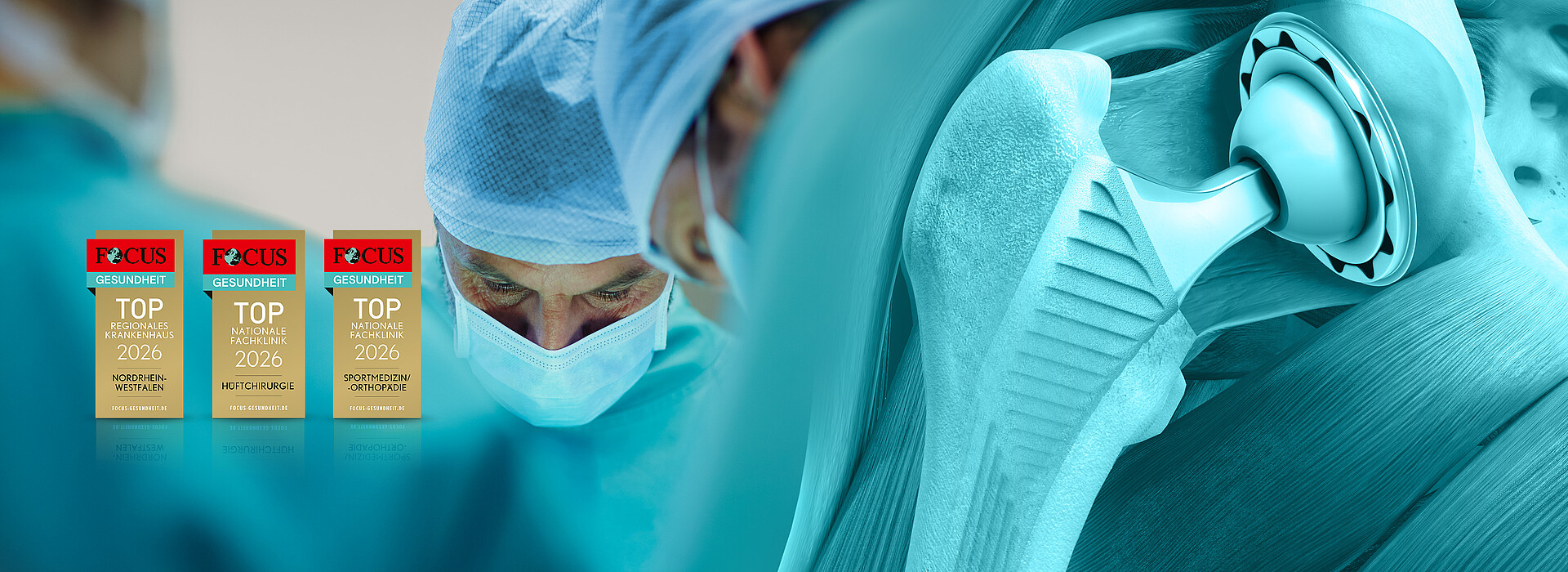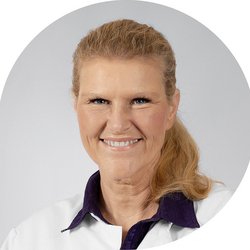Pressure pain, painful rotational movements, for example when turning a bottle, or loss of strength when gripping - these are typical symptoms of rhizarthrosis. Over time, a malposition of the thumb can also develop. A clear cause of rhizarthrosis is not yet known, but women in the menopause are particularly frequently affected. Obesity, excessive strain and genetic predispositions also contribute to the occurrence of rhizarthrosis. Often both thumbs are affected by the disease.
Our hand specialists specialize in the highly complex anatomical structures in the smallest of spaces and will help you to get your hand moving again. Delicate work and surgical techniques that are very gentle on the tissue are part of their craft.
Therapy for rhizarthrosis
The choice of treatment method depends on the stage of the rhizarthrosis and the time of diagnosis. If conservative treatment (painkillers, splints, physiotherapy) can no longer alleviate the pain, surgery on the hand is possible.
Trapeziectomy for thumb saddle joint arthrosis
Trapeziectomy, i.e. the removal of the polygonal bone, is a common form of treatment. The removal of this small joint creates space between the carpal and metacarpal bones and thus enables pain-free mobility of the thumb saddle joint again. The resulting gap can be filled using various surgical techniques.
In addition to a trapeziectomy, the implantation of a thumb saddle joint prosthesis has proven successful in alleviating thumb pain. With this type of finger joint prosthesis, the function of the thumb can be fully restored.
Thumb saddle joint prosthesis - how the hand operation works
When a thumb saddle joint prosthesis is implanted, the worn joint surfaces are first removed and the endoprosthesis inserted - similar to a hip prosthesis, but in a much smaller space. The artificial joint is made of metal and a special plastic. The thumb saddle joint prosthesis results in a reduction in thumb pain and a complete restoration of mobility in all directions. Unlike a trapeziectomy, the original length of the thumb is also retained. This also contributes to a significantly faster return of strength after the operation.
Implantation of the thumb saddle joint is performed under regional anesthesia with sedation or general anesthesia. This means that only the arm can be anaesthetized. An additional pain catheter is used to minimize pain during the operation and improve blood circulation and healing of the prosthesis. Different implant sizes allow each patient to choose the best joint replacement for them.
Aftercare for an artificial thumb saddle joint
After the hand operation, the thumb is initially immobilized with an orthosis for the first two weeks. The orthosis must then be worn at night for a further four weeks. During this time, the specialists recommend avoiding pulling exercises and excessive strain. However, you can start self-training with specially designed exercises the day after the operation. You can remove the orthosis for the exercises. The hand specialists will provide you with detailed information before you are discharged. You will also receive a prescription for physiotherapy. This will be followed by supportive physiotherapy exercises.
A gradual build-up of strength is usually possible after four to six weeks. After around three months, you should be able to use your thumb again without restriction.

Simone Broda
Secretariat Plastic, Reconstructive and Aesthetic Surgery / Hand Surgery
- Phone+49 2351 945-2228
- Fax +49 2351 945-2097
- sekretariat.scheffer@hellersen.de
Private outpatient clinic
Phone +49 2351 945-2228
Fax +49 2351 945-2097
sekretariat.scheffer@hellersen.de




